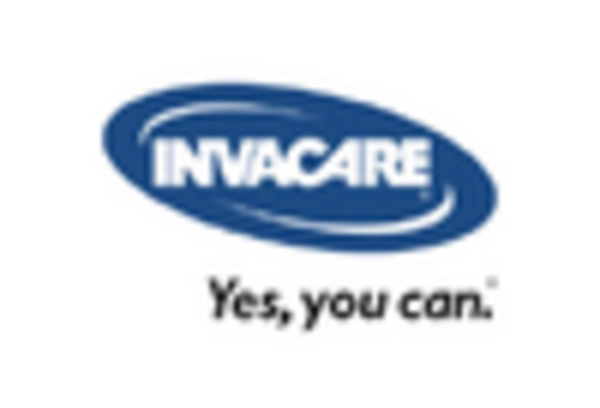The Automated Hospital Beds Market is evolving rapidly. This is driven by advancements in healthcare technology and a growing emphasis on patient comfort and safety.
This market is characterized by the proliferation of innovative products designed to enhance hospital efficiency, improve patient care, and reduce the burden on healthcare professionals.
Competitive dynamics are largely influenced by the increasing demand for advanced patient handling systems, the rise in chronic illnesses necessitating long-term care, and heightened investments in healthcare infrastructure globally.
Companies are focusing on differentiation through product development, partnerships, and strategic acquisitions. This aims to capture market share in an increasingly fragmented landscape.
With healthcare providers seeking to optimize operations through advanced bed solutions, the competitive landscape is marked by the need for continuous innovation and responsiveness to evolving regulatory frameworks.
Getinge AB has carved a significant presence in the Automated Hospital Beds Market. It leverages its established reputation in the medical technology sector.
The company is well-known for its commitment to enhancing patient care through state-of-the-art products. This includes advanced bed systems that optimize patient positioning and comfort.
They also facilitate healthcare professional operations. A key strength of Getinge AB is its strong emphasis on research and development.
This allows it to introduce cutting-edge solutions that align with the needs of modern healthcare environments. Additionally, Getinge AB benefits from a robust global distribution network.
This ensures its products reach a wide array of healthcare facilities, from large hospitals to specialized clinics. The company’s strategic collaborations and partnerships have further solidified its standing.
This is in global markets, enabling it to pinpoint critical customer insights and respond to evolving demands effectively. Drive DeVilbiss Healthcare holds a notable position in the Automated Hospital Beds Market.
It offers a diverse portfolio of key products that include various models of automated beds designed to cater to different healthcare settings. The company’s strengths lie in its commitment to innovation.
This has resulted in the development of adjustable beds equipped with technologies that enhance patient safety and ease of use. Drive DeVilbiss Healthcare maintains a broad market presence across multiple regions.
This positions itself as a trusted partner among healthcare providers. In addition to regular product offerings, the company has successfully ventured into strategic mergers and acquisitions.
These have enriched its capabilities and expanded its product range. By integrating new technologies and broadening its service offerings, Drive DeVilbiss Healthcare continues to play a critical role.
This is in shaping the future of automated hospital solutions globally, ensuring it meets the diverse needs of the healthcare sector.


















Leave a Comment